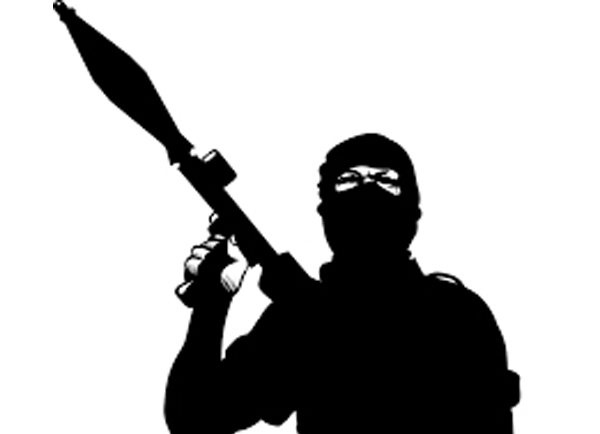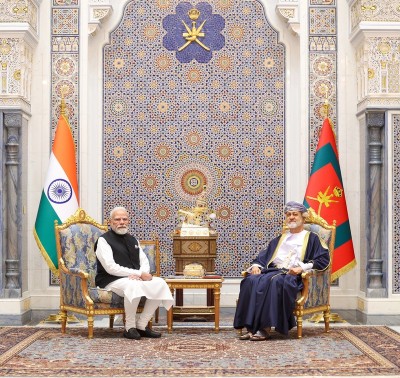
J&K: Testing the Peace
On March 3, 2017, a civilian was killed and a Central Reserve Police Force (CRPF) trooper was injured when militants hurled a grenade targeting SFs deployed on law and order duties at Murran chowk at Pulwama town in Pulwama District.
On February 23, 2017, three Army troopers and a civilian were killed and four Army personnel, including two officers, were injured in an attack by terrorists at village Mulu Chitragam in Shopian District. An unnamed Police spokesman disclosed that a cordon and search operation was carried out at Kungnoo in Shopian by personnel of the 44-Rashtriya Rifles (RR) and Police in the night of February 22: "The cordon and search operation concluded without any arrest or recovery. While returning from Kungnoo, the party was attacked by unknown militants at Mulu Chitragam at about 2 am [February 23] resulting in injuries to six Army personnel including two officers of whom three succumbed to their injuries." One woman, identified as Taja, "was hit by a stray bullet inside her house during the cross fire" and died later. Two militants were also injured in the retaliation by the SFs. According to reports, Hizb-ul-Mujahideen (HM) was involved in the attack.
On February 14, 2017, eight persons, including four Army personnel and four terrorists, were killed in two separate incidents. Sources indicated that, on a tip-off, SFs launched a joint search operation at Parray Mohalla Hajan in Bandipora District. As SFs were sealing off the area, terrorists hiding in the village opened fire on the troops and hurled hand grenades. SFs returned fire, leading to a gun battle, in which eight soldiers were injured. Three of the injured soldiers later succumbed to their injuries. One terrorist, identified as Abu Haris, an LeT 'commander', was killed during the encounter.
In another encounter during the day, three terrorists were killed and an Army officer was injured in the Handwara area of Kupwara District. The officer died later.
On February 12, 2017, eight persons, including four militants, two SF personnel and two civilians, were killed in the Frisal area of Kulgam District. Giving details, Brigadier R. Chakraborty disclosed, "At around 11.30 pm [February 11] we came to know from the police that four militants are hiding in Frisal village and some 4-5 suspected houses were immediately identified. Around 12 a.m., we cordoned off the houses where they were hiding. In the morning, we came to know that a civilian was also trapped inside the house along with the militants, which forced us to delay the operation for 4-5 hours. We would have otherwise finished the operation during the night. When we were moving in, the civilian saw us and started to run towards us but militants opened fire and killed the civilian. Two of our soldiers also lost their lives during the process.But soon after retrieving the bodies, we launched a final assault and killed all the four militants." While two of the slain militants were from the LeT, two others belonged to the HM. In the meantime, people in the area came out on the streets as the encounter was in progress and pelted stones on SFs near the encounter site. SFs fired teargas and pellets in which around two dozen persons were injured. One of the injured persons, Mushtaq Ibrahim Itoo, succumbed to his injuries.
According to partial data compiled by the South Asia Terrorism Portal (SATP), at least 43 persons, including seven civilians, 10 SF personnel and 26 terrorists, were killed in militancy-related incidents during the first 64 days of the current year (data between January 1, 2017, and March 5, 2017). During the corresponding period of 2016, such fatalities stood at 31 (one civilian, seven SF personnel, and 23 militants).
Through 2016, Jammu and Kashmir (J&K) accounted for 267 terrorism related fatalities (14 civilians, 88 SF personnel, and 165 militants) as against 174 such fatalities (20 civilians, 41 SF personnel, and 113 militants) in 2015. The quantum jump in overall fatalities is indeed worrisome. Though SFs managed to maintain a positive kill ratio of 1:1.87 against the militants in 2016, this was much lower than the ratio of 1: 2.75 secured through 2015). The steep increase in SF fatalities is a major concern. More worryingly, the terrorists carried out repeated successful attacks on SF bases and camps through 2016, highlighting vulnerabilities and a measure of complacence in the security establishment. In the worst ever attack in terms of fatalities of Army personnel since 1988, at least 17 Army personnel were killed and another 19 were injured when terrorists stormed the administrative base of one of the units of the Indian Army near the Line of Control (LoC) in the Uri town of Baramulla District at around 5:30 am IST on September 18, 2016. Four terrorists involved in the attack were also killed. One of the injured soldiers died later.
The purported 'paradigm shift' in New Delhi's policy towards cross-border terrorism, which resulted in the September 29, 2016, "surgical strikes" against terrorist launch pads in Pakistan occupied Kashmir (PoK), has failed to alter this trend. According to SATP data, at least 30 SF personnel have died in 16 incidents, including two suicide attacks on Army camps since the "surgical strikes" (data till March 5, 2017). In one such attack, on November 29, 2016, seven Army soldiers, including two Majors, and three terrorists, were killed in a suicide attack on a camp of the 166th Artillery Unit, just about three kilometers from the 16 Corps Headquarters, at Nagrota, in Jammu District.
More worryingly, stone-pelting by 'civilians' became a regular feature during encounters through 2016. There were also reports of large scale 'public' presence during the last rites of many of the terrorists killed during these encounters. Such incidents became more prominent after July 9, 2016, as J&K went through a protracted phase of street violence after the killing of HM 'commander' Burhan Wani in an encounter on July 8, 2016. According to official data provided by the State Government, at least 76 civilians and two Police personnel have been killed in street violence since July 9, 2016 (data till December 31, 2016). Though no official data about the number of civilians injured has been provided, varying media reports suggest that up to 10,000 protestors may have been injured in clashes with SFs. According to Government estimates "over 4,500 personnel of Police and Security Forces were also injured while safeguarding the life and property of the people." At least 133 buildings, including Police Stations and schools, were damaged or set ablaze during the "law and order disturbances" in the Valley (between July 9, 2016, and December 31, 2016)
Based on these broad and disturbing developments, some of Kashmir 'experts' have made an attempt to portray that worsening security situation in the State as irreversible, claiming that the present trends represented a 'revolt of the masses'. A former Union Home Minister went up to the extent declaring that "he had a sinking feeling that Kashmir was nearly lost for India". These assumptions are utter and contra-factual nonsense.
First, a varying measure of 'public support' has always been there, but what is missed out is that large majorities reject the terrorist and separatist agenda, though these voices are inexorably silenced by the terrorist bomb and bullet. Further, analysis of category-wise fatalities data demonstrates that 2016 recorded the lowest number of civilian fatalities in the State since the commencement of Pakistan-sponsored terrorism in 1988. The previous low of 16 fatalities in this category was recorded in 2012. It is useful to note that fatalities in this category are perhaps the most significant index of the consolidation of peace in the State, which recorded a high of 1,333 civilian fatalities in 1996.
Moreover, though the present cycle has been the longest phase of street violence witnessed in the Valley, the 2010 street violence was much worse in terms of fatalities, with at least 101 persons killed and 4,288 persons, including SFs, injured. 46 persons were killed and 1,265, including SF personnel, were injured in the street violence of 2008. Furthermore, the magnitude of violence in 2016 started declining rapidly after the initial surge to alarming levels. On December 19, 2016, Director General of Police (Law and Order) Shesh Pal Vaid disclosed that a total of 2,380 'law and order incidents' were reported during the 'Kashmir unrest', commencing July 8, 2016. Of these, at least 820 incidents were reported in July, which came down to 747 in August, 535 in September, 179 in October, 73 in November and just 25 during the first 19 days of December. According to SATP, there were another two incidents of street violence thereafter, in 2016. Since the beginning of the current year, at least 16 such incidents have been recorded.
It is useful to recall that, despite the unrest in 2010, the security situation in the following two years - 2011 and 2012 - improved significantly. The hanging of Parliament Attack accused Afzal Guru in 2013 and the subsequent unrest, though very limited, impacted adversely on the security situation in 2013 and 2014. Again, in 2015, the security situations improved. There is, thus, no permanent impact of the sporadic outbursts of unrest in Kashmir, and there is no sustainable 'revolt of the masses'. Rather, these wider mobilizations are the outcome of focused strategies emerging from Islamabad, with street demonstrations orchestrated with the help of terrorist formations operating from Pakistani safe havens, and separatist proxies in J&K.
Indeed, on December 19, 2016, DGP (Law and Order) Shesh Pal Vaid had stated, "The unrest period is virtually over. Situation is returning to normal. The game plan of Pakistan to keep the pot boiling by fuelling unrest through its sponsored militants has been foiled by the Police." Echoing a similar view, the then CRPF Director General (DG) K. Durga Prasad, stated on February 27, 2017, "The situation is not as naazuk (sensitive) as it was last year. The intensity with which it (stone pelting) happened is no longer there. The situation of stone pelting on security forces is not bad as earlier."
The peace secured by SFs in Kashmir over the past years is irreversible. The Forces have the strength to overcome transient disturbances. The crisis remains within the political spectrum, with both the central and state Governments failing to conduct themselves in a manner that is expected of them. It is the absence of political sagacity and focus, and, indeed, periodic and intentional political mischief, that has produced the cyclical disturbances of the recent past, despite tremendous gains registered by SF action. Regrettably, there is no respite from petty-politicking - both by ruling and opposition parties. This remains the real challenge, and possibly insurmountable obstacle, to restoring Kashmir to an enduring peace.
Support Our Journalism
We cannot do without you.. your contribution supports unbiased journalism
IBNS is not driven by any ism- not wokeism, not racism, not skewed secularism, not hyper right-wing or left liberal ideals, nor by any hardline religious beliefs or hyper nationalism. We want to serve you good old objective news, as they are. We do not judge or preach. We let people decide for themselves. We only try to present factual and well-sourced news.






